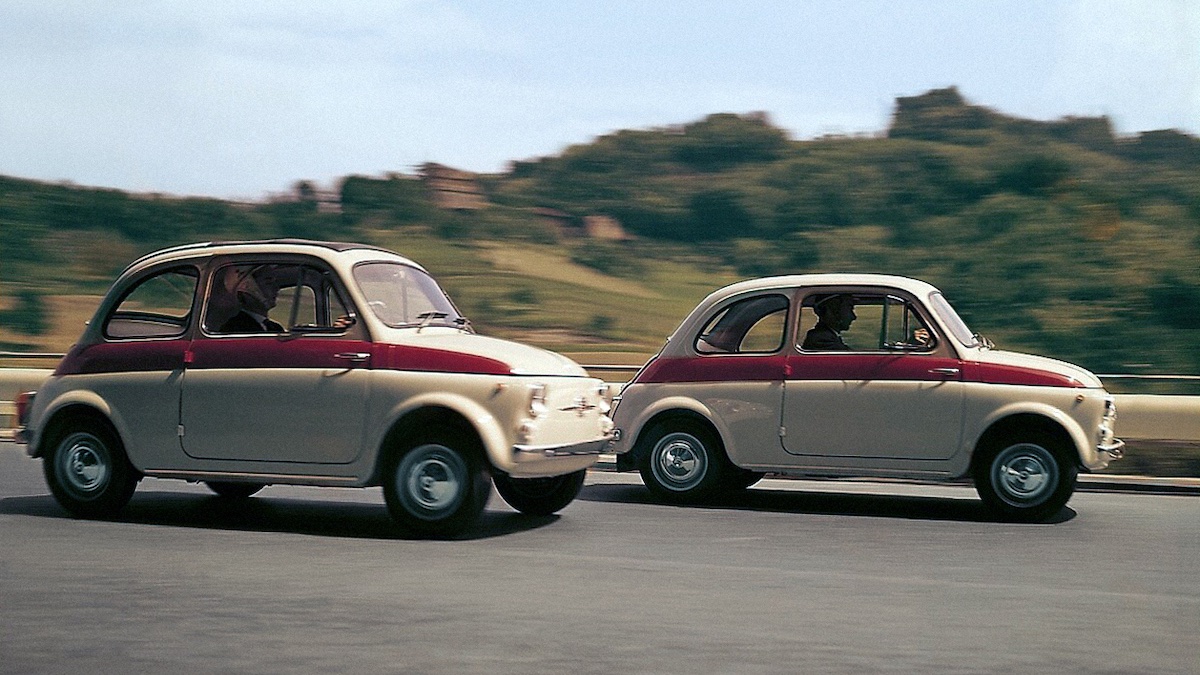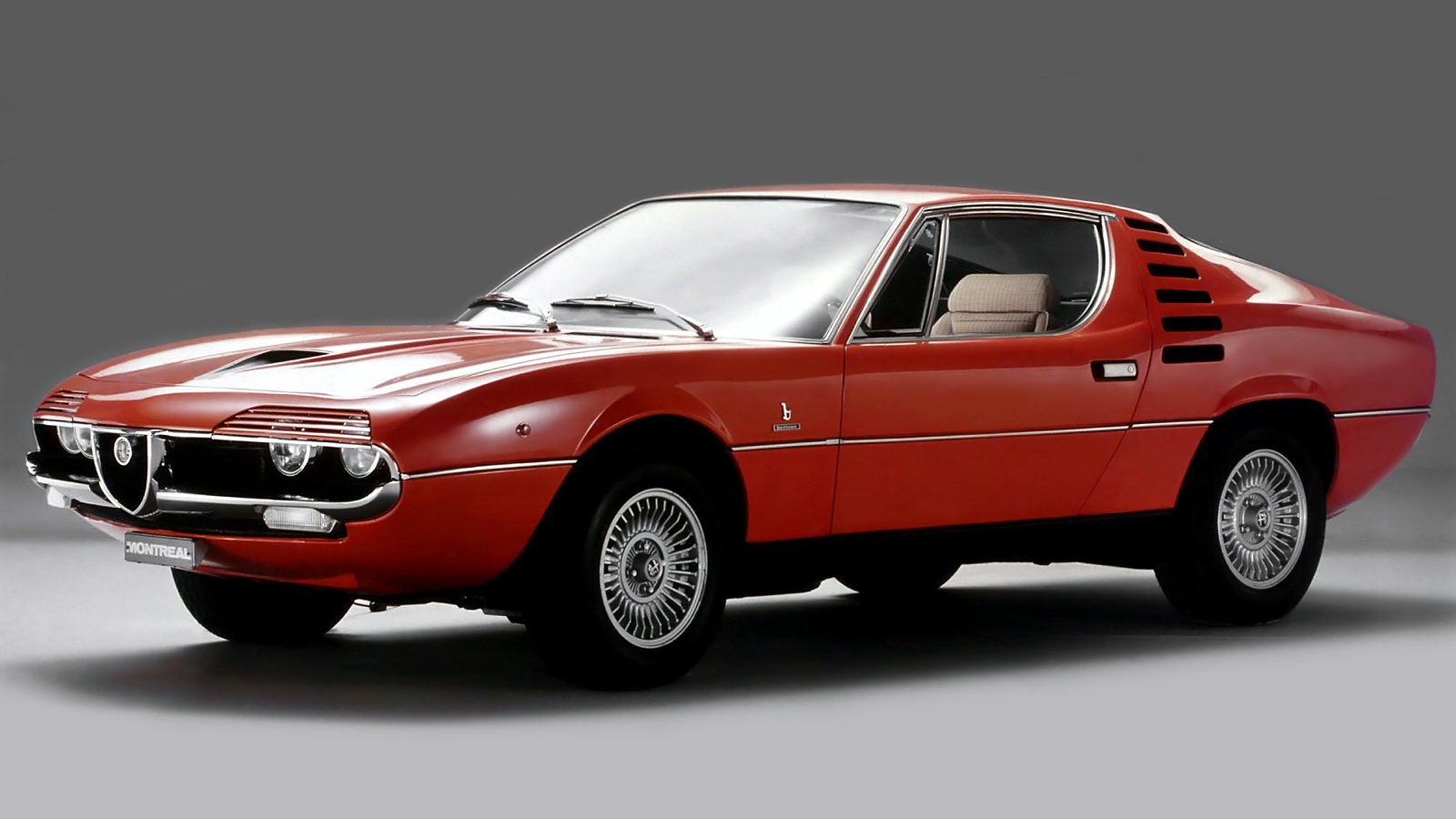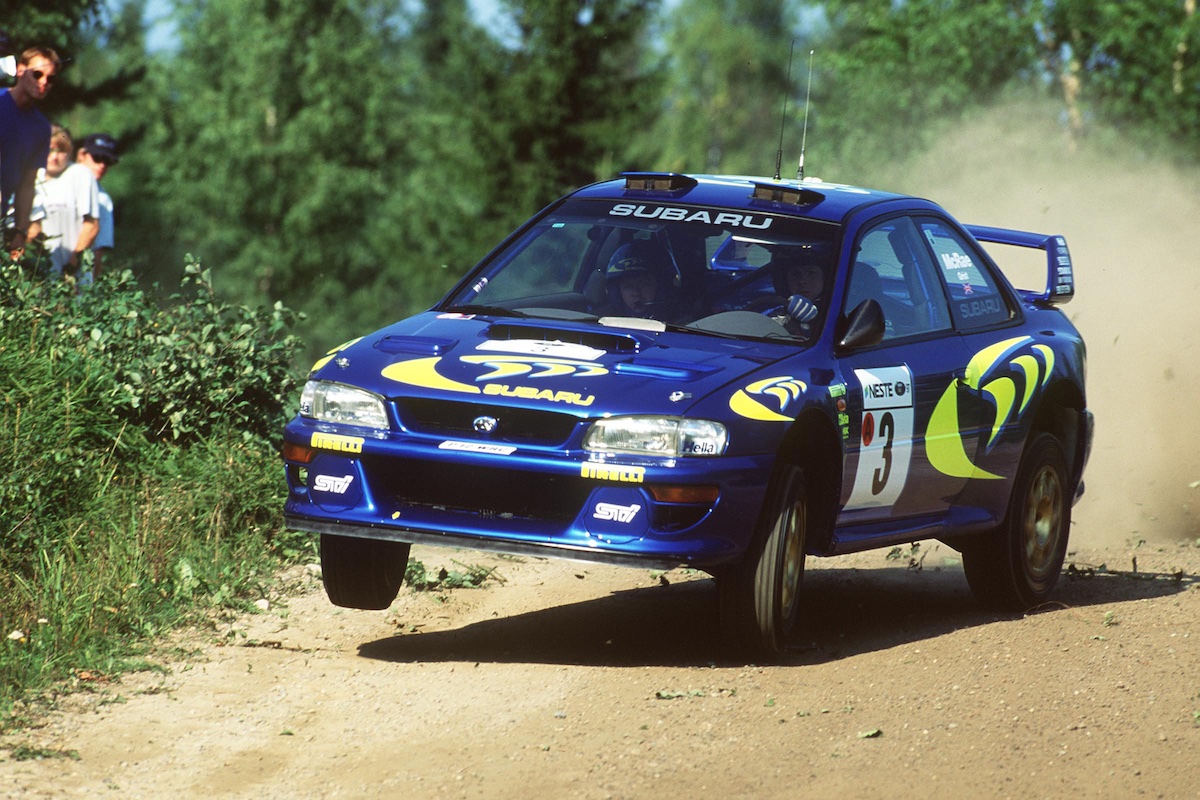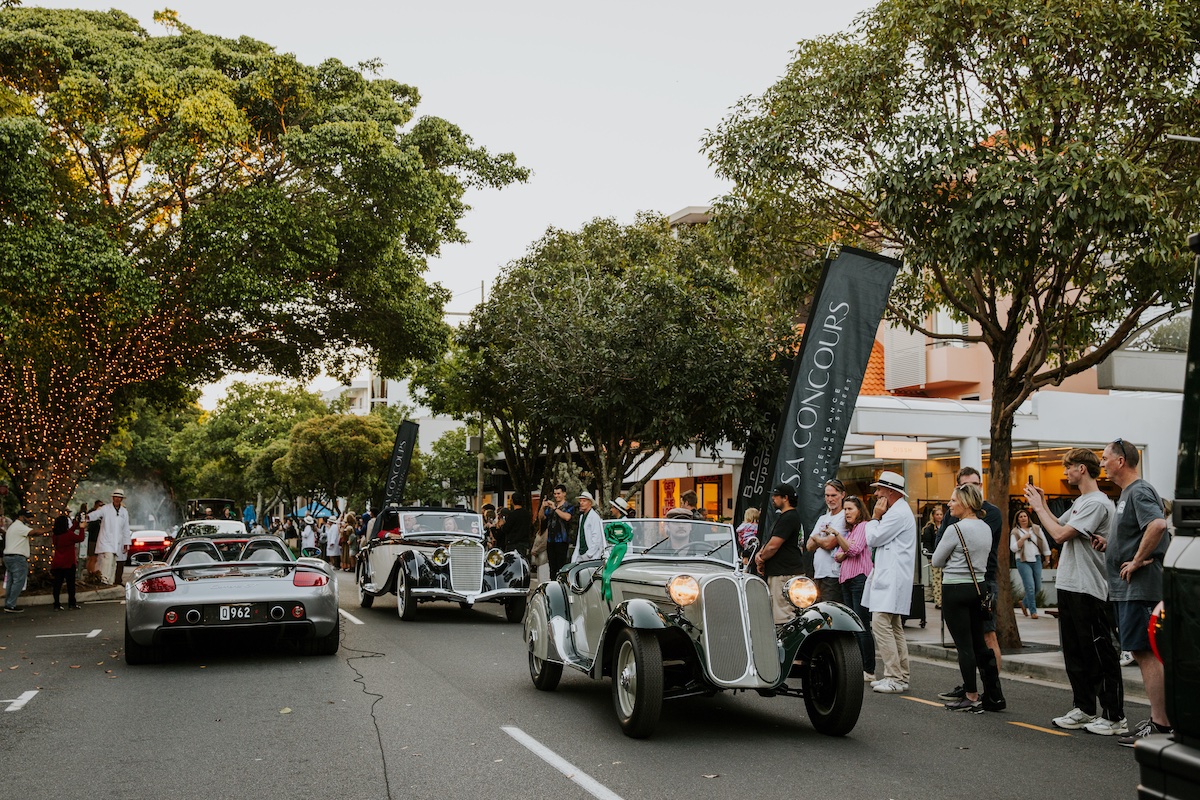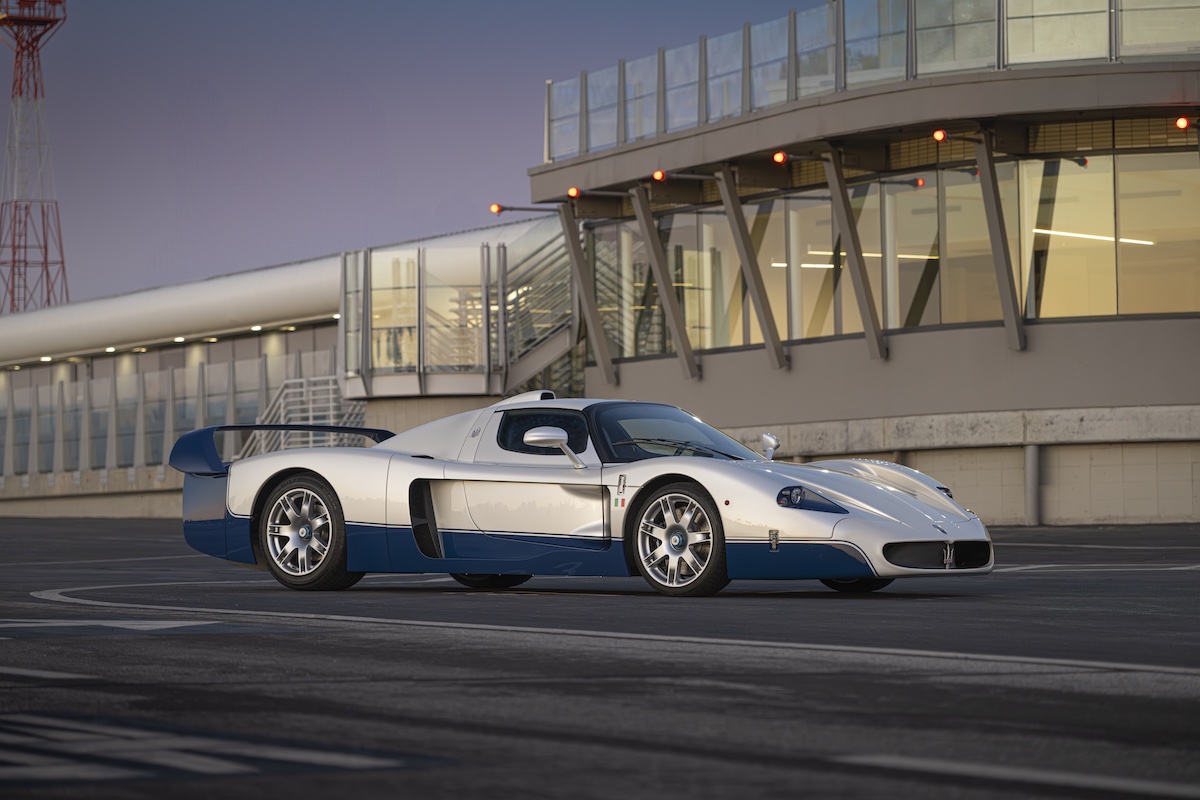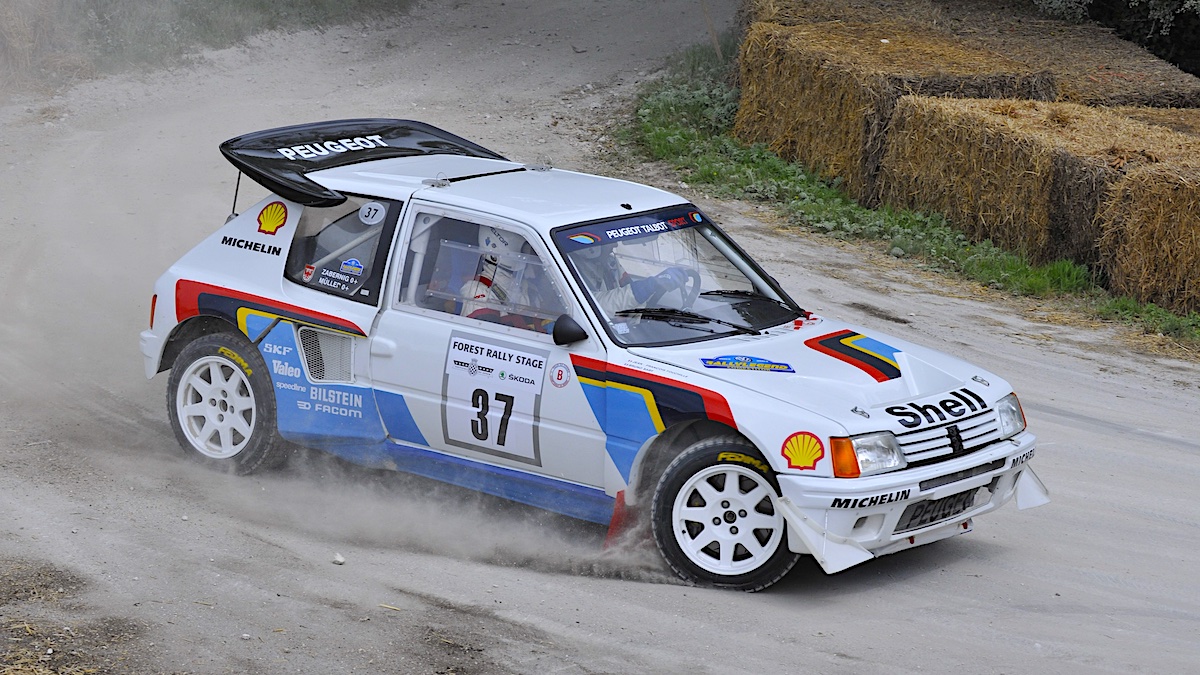Call it bambino, cinquecento, or the funny little Fiat that circus clowns climb out of – the Fiat 500 went beyond mere sales success to become a national symbol.
Look at any picture of an Italian city in the 1960s – or well into the 1990s – and Fiat 500s will be swarming like flies.
Dante Giacosa had already put Italy back on wheels at least twice, before masterminding the nuova (new) 500 of 1957. It was Giacosa who had designed the original front-engine, two-seater 500 Topolino that ran from 1936-55, then produced the ground-breaking 600 in 1955.
The rear-engine Fiats had their roots in WW2 and were indirectly the result of British-American input. Specifically, an allied bomb destroyed Fiat’s design studio and with it, the only prototype of Tipo 400, the Topolino’s front-engine successor.

Giacosa started again, this time pursuing a rear-engine design. Secondary to the Fiat 600, the little-brother ‘Project 110’ was prompted by the unexpected post-war success of spartan cyclecars like the Fuldamobil (1950) and the Iso Isetta and Reliant Regal (both 1953).
A two-seater was never out of the question; however, a 1953 sketch of a space-efficient four-seater by NSU-Fiat designer Hans Peter Bauhof inspired Giacosa to incorporate a squeezy rear bench, enabled by the 500’s unitary construction and the vertical, two-cylinder all-alloy rear engine.
The 500’s proportions disguise how ridiculously tiny it is, just 2970mm from bumper to bumper as tall as it is wide at 1325mm. It weighed a featherweight 470kg.

Too late for the 1957 Geneva show, Fiat instead launched the nuova 500 (500N) in summer by having dozens of them drive out of the Lingotto factory with fashion models standing tall through their sunroofs.
The major selling point of the 500’s interior was that it had an interior. A Vespa scooter doesn’t. Basic, but brilliant, the bambino could accommodate two compact-sized adults adequately in front; rear leg and headroom were minimal, but at least available. Surprise-and-delight features included floor heating and windscreen demister (ducted via the chassis backbone), and windscreen washing by a rubber squeeze-bulb. The lonely speedo incorporated a fuel reserve warning.
The two-cylinder, all-alloy, 479cc pushrod overhead valve engine was designed by Giovanni Torazza, previously a protégé of Gianni Lancia (and later, as head of Fiat’s advanced engineering, the person responsible for patenting variable valve timing). The initial version’s 9.7kW proved inadequate; smaller-engine Goggomobils and Citroën 2CVs outperformed it.

In just three months, engineer Giacosa developed a tuned 11kW version for a better-equipped model, the 500 Standard; the original became the Economy.
In 1958 came the 500 Sport with a 499.5cc, 16kW engine that would be adopted across the range from the 500D in 1960. Zero to 100km/h now took only half a minute. The longer-wheelbase 500 Giardiniera (“gardener”, station wagon) of 1960 had a variation of the 499.5cc unit that lay horizontally beneath the load floor.
The 500D also introduced front-hinged doors (for the sedan, not wagon) and a smaller sunroof that improved body rigidity.
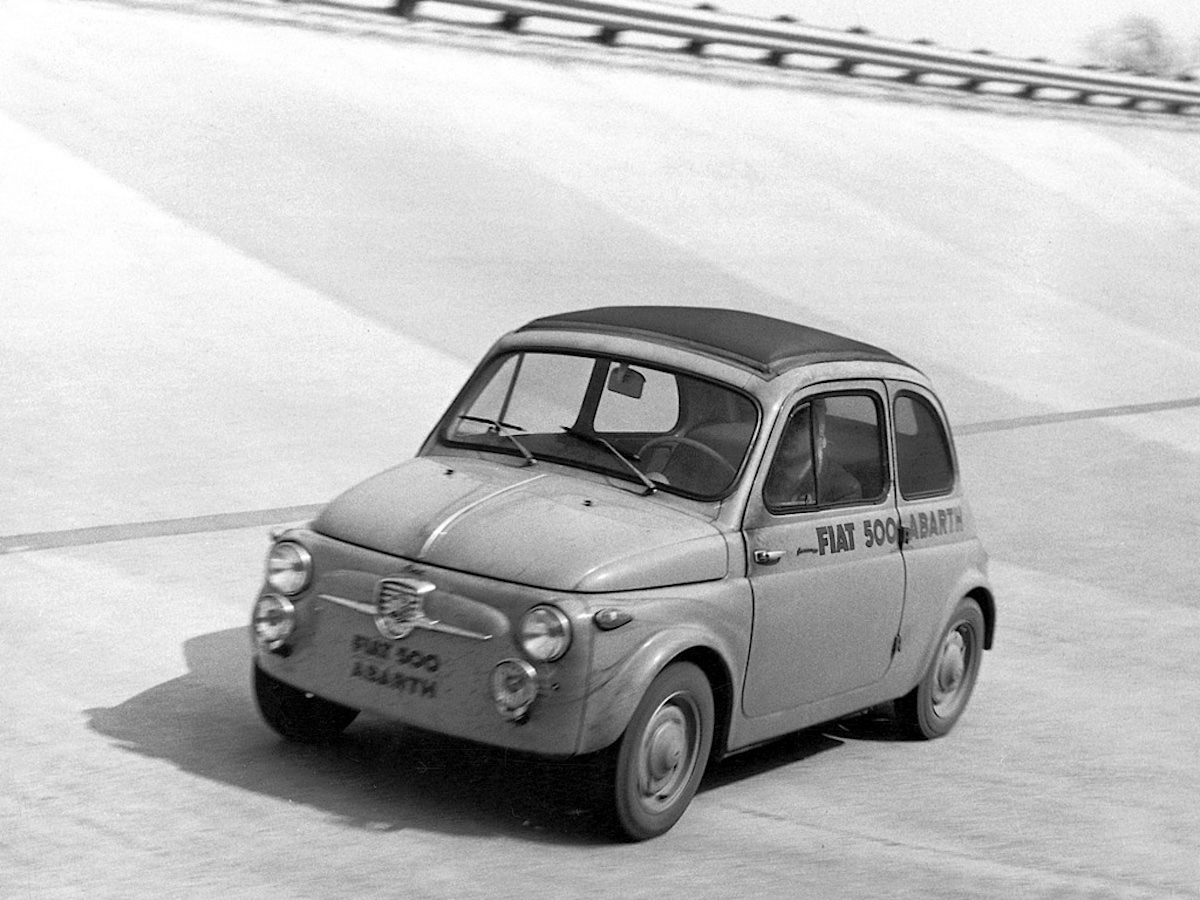
Front suspension was by transverse leaf and wishbones, and the rear by coils and semi-trailing arms. Drum brakes weren’t boosted, nor was the worm-and-sector steering – which was light enough, thanks to the car’s feather weight and skinny 125 x 12 tyres.
Gorgeous styling, entertaining dynamics and an unburstable engine made the 500 an enduring winner. It spawned many variants, including potent Abarth racers, the beautiful Autobianchi Bianchina coupe, the lovely Ghia Jolly and the Noddy-like Vignale Gamine roadster.
The swansong sedan was the 500R, introduced in 1972 alongside its successor, the 126. The last 500R was built in August, 1975; the last Giardiniera (by Autobianchi) two years later. When the curtain was finally drawn on production, no less than 3.9 million bambinos had been born.

